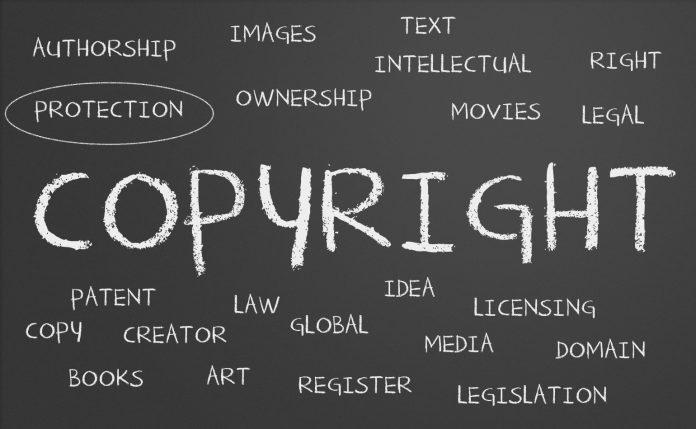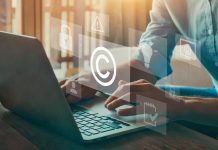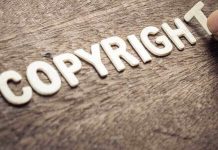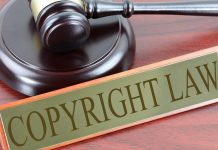This article is written by Preeti Pallavi Jena, from the School of law, KIIT University, Odisha. This article discusses the reasons for registering computer software under the Copyright Act.
Table of Contents
Introduction
In the 1970s, there was huge chaos regarding giving protection for computer software. Its concern was, whether the computer software will be protected under a sui generis system, a patent system, or in the copyright system. The conclusion came from it was computer programs must be protected through copyright. Copyright protects expressions and not ideas and also the creativeness of a work.
The objective of copyright has always been the protection of the interest of a creator.
Copyright
Under intellectual property, copyright is a form that is given to the creators under the Indian law for the original works of the author such as computer programs, databases, literary, dramatic, musical, artistic works, cinematographic films, and sound recordings.
The rights of the copyright owner are:
- To produce the work in a material form.
- To publish the work.
- To perform work in the public.
- To produce, reproduce, perform or publish any translation of the work.
- To make any adaptation.
- To communicate the work by broadcast through radio, cable.
- To make cinematograph films or recordings.
To know more about Copyright Registration please visit
Reasons for achieving copyright protection
There are four main reasons for acquiring copyright protection:
Code related matters
For connecting two sets, coding is approached. Coding is the better approach for identifying the signals. A simple code can make a product more attractive. Hence coding is an essential element of a product. If this code is created by you, by acquiring copyright protection, you can restrict others from using your code in their projects. Because you will be acquiring ownership over it and if someone tries to use your product then legal action or infringements can be taken against them.
Give the world a notice
Copyright vests with the author after work has been completed. Copyright basically tries to stop others from using or copying your own work if you get protection from such a product but this doesn’t mean that another person cannot create the same work. If someone else creates a similar kind of work, you have no right to stop that, like if you made a code for your software and someone else also made similar code without having any knowledge or taking any reference from your code, then you have no right against such person or work. Registering your work under copyright provides you protection regarding your work for a period of 60 years plus a lifetime which is mentioned under Section 22 of the Copyright Act.
Enforce your rights
Registering under copyright makes you get compensation for the damages caused to your reputation and product by the infringer. The compensation will be given as per the damages that occurred or the monetary loss set by the judges of the court. This registration can infringe such a person if serious injury or damage has been caused.
Keeping your business private
Softwares came 20 years back and then people started purchasing those over the internet and installing them on their PC and due to this reason, registering copyright can benefit you. While you copyright your software, some part of your code should be made available to the public so that they can have access to it.
Copyright protection for computer programs
Registration of copyright is not mandatory in nature, but many times, registration is the prima facie evidence in the court of law. Hence, the owner is also advised to register his product.
Copyright protection is not given to ideas, rather to expressions. It means that the author of computer software has copyright protection when someone tries to exactly copy the same code, but not for the ones, where code is made different, but both amount to the same results.
The procedure of copyright registration
Filing of application (with the fees required or prescribed)
The author of the work or owner files an application either physically or virtually in the copyright office for its registration. It can be done physically by being present at the office or rather through the e- filing from the official website of the copyright. For each work that needs to be registered or you want it to be registered, separately you have to file the application for each of them.
Examination procedure
Issue of the diary number must be made after that. Then, you need to wait for a minimum period of 30 days for any objections. Also within this time limit, the examiner examines the application which you have filed on the office of the copyright.
Objections: If objections are raised then a letter needs to be sent to both the parties and then they need to wait till the reply from the parties comes. After that, the hearing would be done in front of the registrar. But if no error or objections are found by any person then the application can be moved for the next procedure.
Registration
This is the main step and also the final step where the registration of your application takes place only if you have successfully cleared the above process stages. If you have not provided any information or document then the registrar will ask you to submit those as soon as possible. And as soon as you submit it will be checked by the registrar. If he finally feels satisfied then he will add the details into the register of copyrights and will issue a certificate of the registration which is made.
As per the US office of Copyright, it allows for registering applications in a computer program with Form PA or else in Form TX. In most cases, Form TX is used. But if the content is based on a computer game then Form PA must be used.
Registration occurs by filling the form and sending it to the Copyright Office with the fees required for registration. The Copyright Office doesn’t send the receipt if it is not requested properly. Hence, the application must be sent from a proper mail, in which, you have to request properly for a return receipt in which it should be clearly mentioned that the Copyright Office had received the application which was sent by you through the mail only.
After the receipt of the application sent, the Copyright office takes around 6 months to 1 year time period for processing the Copyright registration. In this period of time, the applicant will get either a certificate which would mention that copyright registration has successfully done or a letter that would ask for any extra information, which is required but not provided in the application or you can also get a letter in which it will be stating the rejection of your application along with the proper details for rejecting your application for registration. The registration takes place once you submit the application with the fees in the Copyright office itself.
If the information which is given in the application for registration were wrong or incorrect, then gaining copyright protection will not be successful, hence, the information should be mentioned rightly in the application form for getting registration under copyright protection. There are four areas which are very important and need to be mentioned correctly. These are:
The author and nature of authorship
Here, the author is the actual person (employer) who created the computer software program based on work made for hire. These employers have or own the work as well as have copyright. The employees who are working regularly are said to be working for hire and they are governed by employers only. Section 2 of the Form has both the author and also the nature of authorship. As we know that copyright protection is not granted to the ideas, facts, and functions of a product. Hence, the copyright office can reject such grounds if the product is describing the functions of the software, the designs which are made, etc.
The year of creating and publication under Section 3 of the Form
In the Form, under Section 3, the applicant must mention the year on which the computer software was invented or created. Work can be termed to be created once it is fixed under the author’s authority like if you are writing a code, finalizing it in the software, and then saving the code as a document in the computer. Then it can be said to be the fixation of such software. Proper attention needs to be given to the year of creation on which the filing of the application was made under different versions.
Every version of the program has separate work for different applications that need to be made in the year of creation. If a computer program has already been published, then the applicant must mention the date and place of the first publication. A simple mistake for mentioning that the program is published or not can make huge errors and will be impossible for getting copyright protection. If a program is not published before, then an entirely new application needs to be made but if it is published then supplementary registration will be made.
Hence, it creates a huge difference. So, this needs to be mentioned properly and correctly for getting protection under copyright. Publication as per the Copyright Act is distributing the work to the public for more distribution of it to more public. If a program has not been published, then it should be clearly mentioned in the application form and the date and place portion should be left blank under Section 3 of the application form for avoiding confusion. It is not compulsory for a program to be published for receiving copyright protection because the protection is applicable to both the published and unpublished work.
Derivative works
Almost all the computer programs produce codes from the previous version with some changes in it. If a program consists of insubstantial previously published code or existing codes that are not published, then the program is said to be a derivative work and not an original work, which should be identified in the form under Section 6. If a significant portion of a program is published then it will be termed a derivative program.
Deposit requirements
If a program consists of trade secrets, then the applicants try to take advantage of those and avoid depositing the whole code in the Copyright office. The applicant in the application form includes a cover letter mentioning that the program has trade secrets with the copyright notice and any special deposits.
Special deposits
- If the code source which is printed is less than 50 pages then all the pages need to be submitted with the Trade Secret which is blocked and these blocked portions cannot extend half of the total lines of the code.
- If the source code is more than 50 pages then for reducing burden applicant can do the following:
- Deposit the first 10 and last 10 pages of the source code.
- Deposit the first 25 and last 25 source code pages along with the major lines that are blocked out.
- Deposit the first 25 and last 25 pages of the object code including any 10 consecutive source code pages.
Case law
Eastern Book Company and Others v. D.B. Modak & Another
Facts
In this case law, Eastern book companies and Eastern publishers were publishing law books. They publish reports of Supreme Court Cases (SCC). The judgment of these laws is copied and fonts and paragraphing are done to make it relevant and easier for the readers to know the basics of the case laws. They also added footnotes and headnotes. The respondent created software that publishes CD ROM on the name of Grand PiX and The law. The respondent copied most parts from the SCC on its CD ROM.
Issue
What are the minimum requirements for the fulfillment of the standard of originality in a derivative work to acquire copyright protection?
Held
The decision was given in favor of the applicant by saying that, for acquiring protection for the derivative work, the work must show substantial copying of the original work. Even though the applicant copied the judgment there was a minimum level of creativity in that derivative work. The court held that the respondent did wrong by copying the exact paragraphs made by the applicant. Here, the judges applied the ‘sweat of the brow’ which says that the author deserves to be rewarded for the skill, and hence, the applicant will be given compensation.
Copyright infringement
When a person intentionally or without intention tries to copy or use the work of the creator without his prior consent and knowledge by copyright law it amounts to an infringement. This happens when you are exploiting the rights of the owner which have been mentioned under Section 51.
Remedies available for copyright infringement
There are 2 major types of remedies for copyright infringement:
- Civil remedy
- Criminal remedy
Civil Remedy
As per Section 55, remedies that are available under it are:
- Interlocutory Injunctions,
- Pecuniary remedies like the Account of profits, compensations of the damages caused,
- Anton Pillar Orders,
- Mareva Injunction, and
- John Doe Order.
Criminal remedy
Criminal remedies include the punishment under Indian law which may not be less than six months but which may extend to three years. It also gives a fine which shall not be less than Rs. 50,000 and which may extend to 2 lakhs.
Conclusion
From the above, we conclude that even though it is not compulsory for licensing or registering the computer software under copyrights, it definitely gives lots of benefits if you register it. This is the reason why it is preferable to register under copyright law.
References
- http://www.legalserviceindia.com/cyber/copyright.htm
- http://www.legalservicesindia.com/article/855/Indian-Copyright-Software.html
- https://www.wipo.int/copyright/en/activities/software.html
- https://corporate.findlaw.com/intellectual-property/how-and-why-to-register-copyrights-for-computer-programs.html
- https://www.nolo.com/legal-encyclopedia/how-register-copyright-software-application.html
- https://www.mondaq.com/india/copyright/262564/copyright-protection-for-computer-software-an-indian-prospective
LawSikho has created a telegram group for exchanging legal knowledge, referrals and various opportunities. You can click on this link and join:
 Serato DJ Crack 2025Serato DJ PRO Crack
Serato DJ Crack 2025Serato DJ PRO Crack











 Allow notifications
Allow notifications



